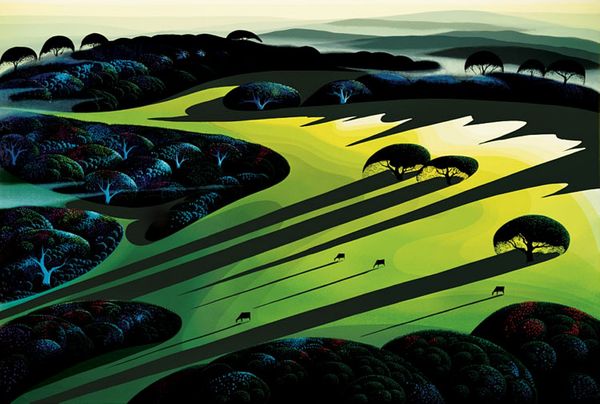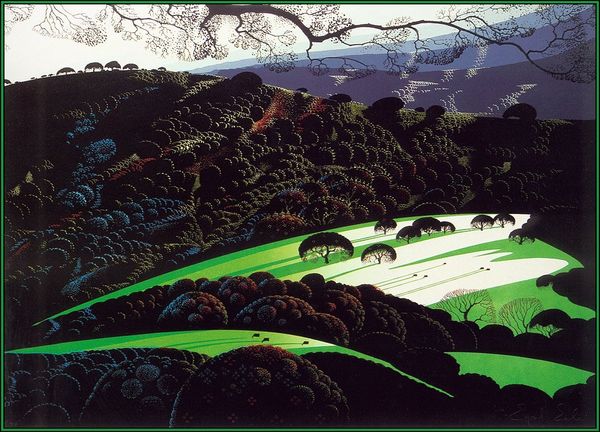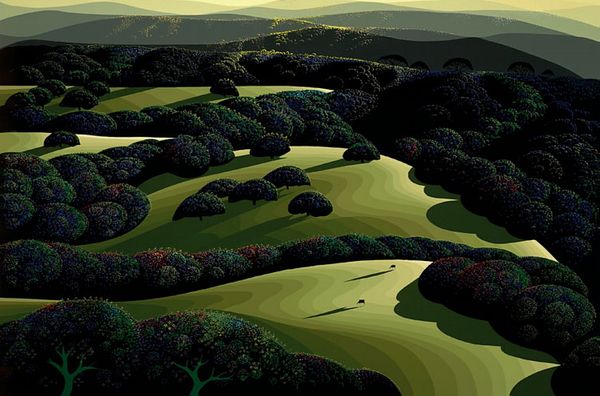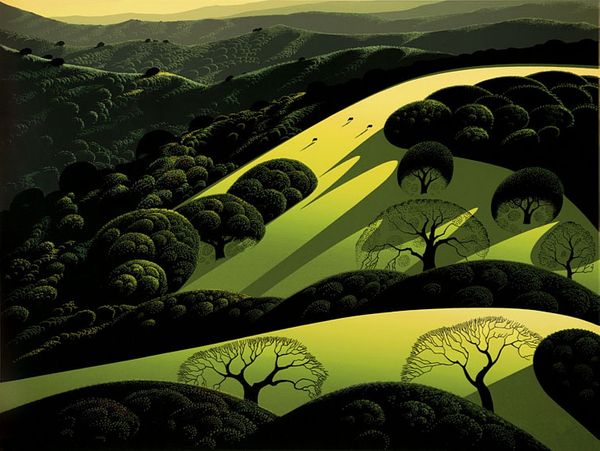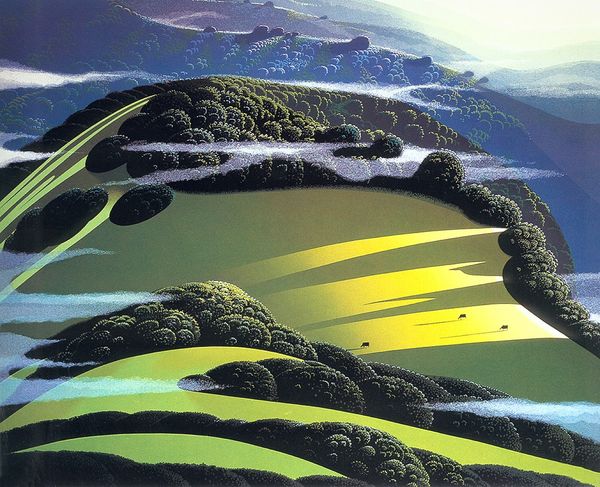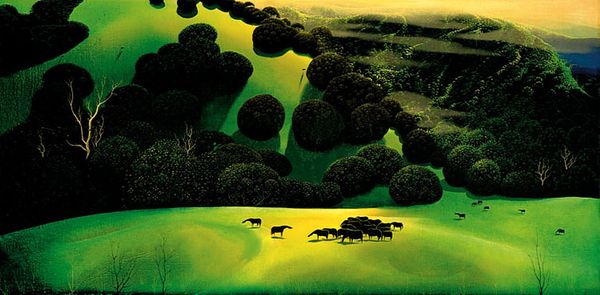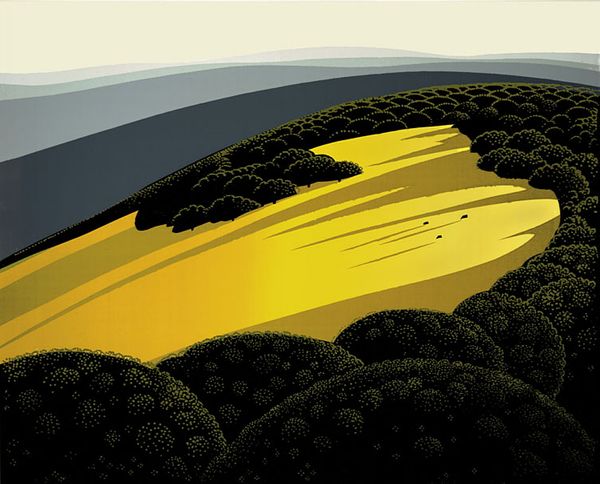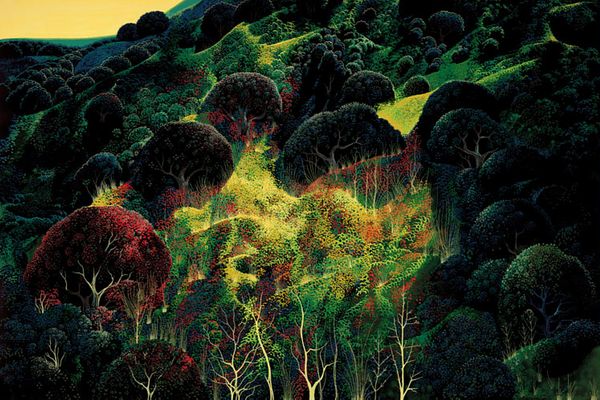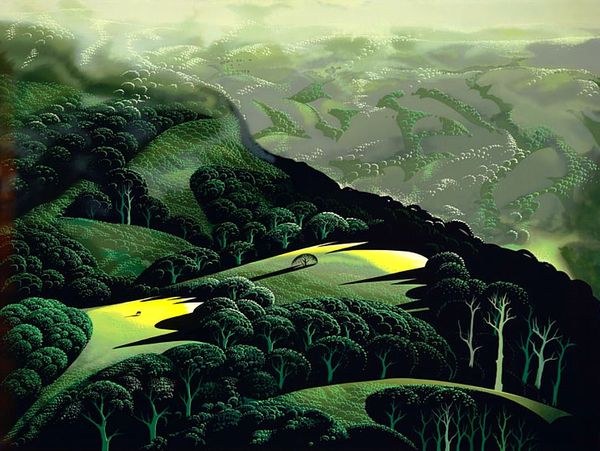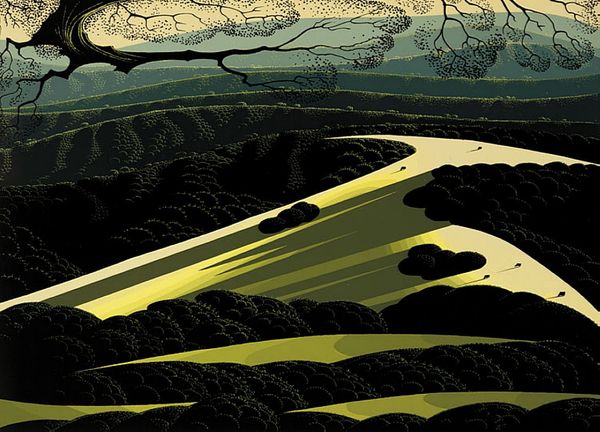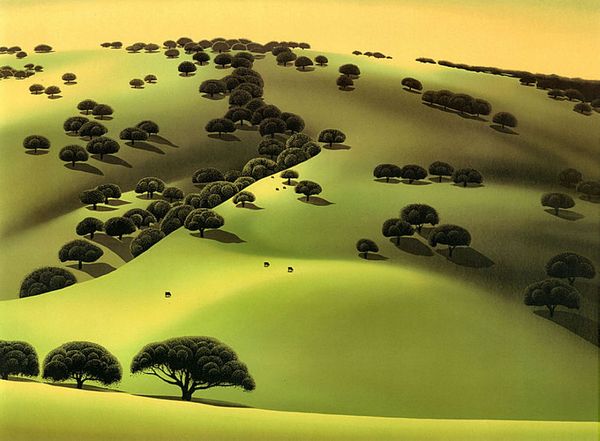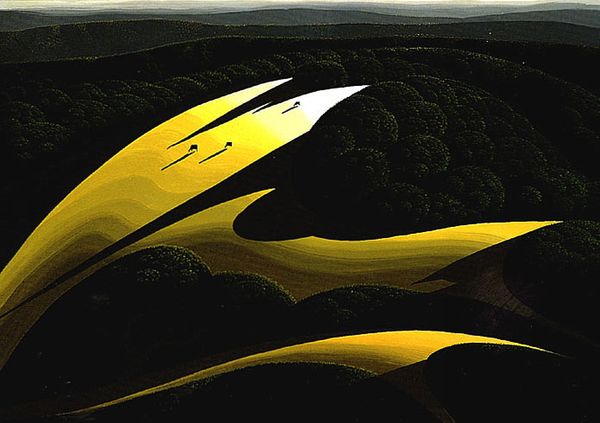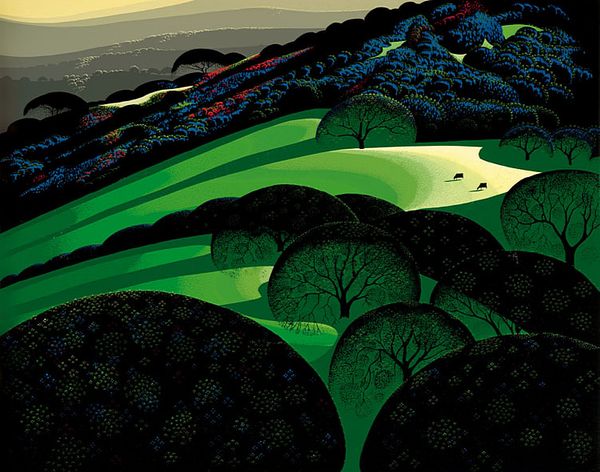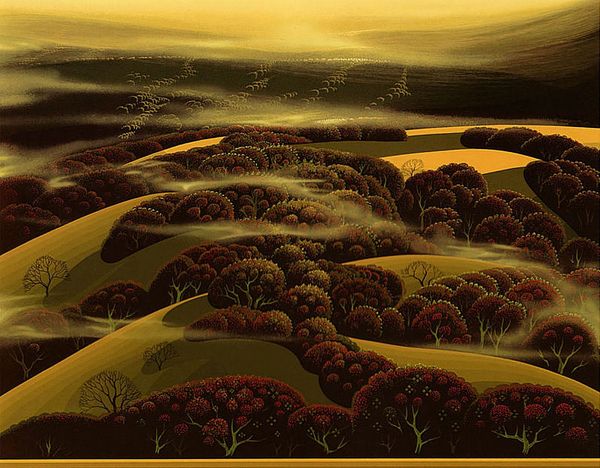
Copyright: Eyvind Earle,Fair Use
Editor: This is "Santa Ynez Valley" by Eyvind Earle, made in 1974 with acrylic paint. The contrast between the flat planes of colour makes the landscape feel a bit surreal, like a stage set. What jumps out at you when you look at this piece? Curator: I’m drawn to how Earle uses acrylic paint. It allowed him to create these sharp, distinct shapes, almost like cut paper. Look at how the darkness of the trees is placed against the golden field; consider what sort of labor was involved in achieving that kind of even coverage. Do you think it’s closer to painting, or craft? Editor: Hmm, it’s interesting that you bring that up! I hadn't considered the labour so directly. Thinking about it that way makes me consider how that perfect coverage changes our perception of this valley versus one done more traditionally. Curator: Precisely! It’s not just about depicting the landscape. It's about Earle's choices regarding materials and the methods he employs, shifting our attention to the production itself. What kind of aesthetic and environmental ideas may come to your mind considering Earle’s technique? Editor: It looks so stylized it feels almost…manufactured, which then puts the real landscape in a strange position, being both natural and represented with something that has an element of industrial process. Curator: Exactly! Consider what this reveals about our changing relationship to landscape in the 70s with the expansion of industrialised acrylic use and what it reveals about both are desires and concerns. It challenges our notions of a “natural” scene and raises critical questions about our own consumption, right? Editor: Definitely. Seeing the painting through this material lens really changes my perception of what Earle might have been trying to say. Curator: Right! By thinking about production, process and consumption you uncover what's communicated to you about society, the landscape and its production.
Comments
No comments
Be the first to comment and join the conversation on the ultimate creative platform.
